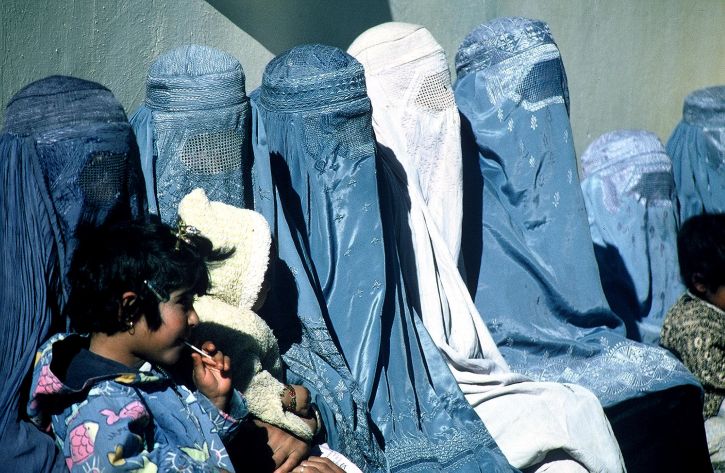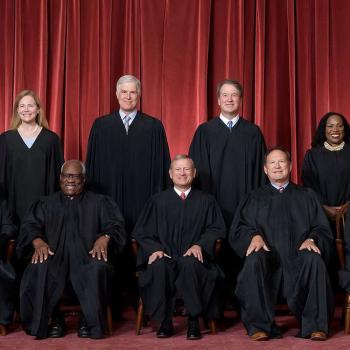Critical theory presents itself as an all-encompassing universal principle, teaching that all human institutions and cultures can be explained in terms of dominant groups exercising power over and thus oppressing other groups. Critical race theory has grown out of the American experience of race-based slavery and injustices towards black people.
But the influence of American academia spreads around the world, so it is interesting to see how non-Americans are adapting critical race theory to their own contexts and to the traditional Marxist attacks on “imperialism.” So we now have a critical race theory take on Afghanistan and its current takeover by the Taliban.
The Arabic news service Al Jazeera has published an article entitled Monsters, Inc: The Taliban as Empire’s bogeyman by Sahar Ghumkhor and Anila Daulatzai, two women described as academics working out of Australia.
Their project, using the jargon of the field, is “interrogating the presuppositions that underpin prevailing paradigms on Afghanistan.” They take up “the daunting task of offering critical theorising of Afghanistan today,” even in the face of ” the overwhelming whiteness of Afghanistan Studies.”
They accuse others of “racialising” the Taliban, but this is exactly what they do, framing the war in Afghanistan as a conflict between “white” Americans, Europeans, and their Afghan allies and the indigenous Taliban in the black role. (Never mind that radical Islamic fundamentalism is a religion, not a race.)
They then argue that there is no essential difference between the two sides, criticizing the assumption that “The ‘toxic masculinity’ of the Taliban fighters is somehow more toxic than unrestrained white violence, white occupation, white torture, white drones.”
They complain that the violence of the Taliban is portrayed as irrational, whereas the violence of the “Imperialists” is portrayed as rational, just, and unintentional. They ask, “Why have we come to see the logic of imperial violence on the Afghan population as more logical, instead of as (or more) illogical, as (or more) illegitimate, as (or more) repulsive as Taliban violence?”
I can see their point. Violence is violence. The ordinary Afghan peasant is in danger from both sides. But the point, I think, is weakened by the authors’ insistence on “racializing” the issue.
Recent reports of war crimes by the Australian and British armies which showed Afghanistan had become a killing field, as white men so desired, gesture to the continued power of white innocence, white redemption and its global reach. Western violence, to borrow from cultural anthropologist Talal Asad, is presented as unintentional and rational, despite its murderous trail, and its overarching intent is always just.
Notice what this preoccupation with “whiteness” does to the widespread fear of what the Taliban rule will mean for women. Already girls’ schools are being closed, Taliban fighters are taking young girls as sex slaves, a woman has been shot for not wearing a burqa, and a woman whose cooking was not up to par was set on fire.
But Drs. Ghumkhor and Daulatzai, two well-educated Muslim women, dismiss concerns about Afghan women because feminism is “white”:
How does one express solidarity with Afghans, and what forms of support should be abandoned? (Perhaps, white liberal feminist tears/fears for Afghan women and girls that still yet justify US imperial violence would be a good start.)
They take recourse in a narrative analysis: “The war on terror is often told like a fairytale, of Muslim women as damsels in distress, and white knights bravely fighting brutes to free them.”
So much for “theorizing,” but what about actual women being raped, locked up, and brutalized?
This brings up another aspect of critical race theory. If “whiteness” is the locus of evil, then it isn’t just the bad deeds of white people that need to be condemned. Their good deeds are also tainted by “whiteness” and so must also be condemned.
Thus, Drs. Ghumkhor and Daulatzai express harsh indignation not only against western troops, but also against western humanitarian workers (thousands of whom are now trapped in Afghanistan):
A romanticised offering of the foreign occupation provides deceptive indicators of girls in school, women working (as if this alone indicates anything) or the joys of listening to music, fashion or skateboarding. Erased in this sentimentality is how Afghans have been subjected to layers of violence in the form of “humanitarianism”.
As we have seen, critical race theory has a very broad definition of violence, encompassing not only causing physical harm but also words, attitudes, and any perception of the imposition of power. But these scholars call humanitarian workers–who have been risking their lives to give the Afghani people health care, food, and education–vampires. That charge comes in another statement that minimizes women’s rights, referring to “a vampiric aid industry, both committed to maintaining Afghan dependency, even as they speak of women’s empowerment, education and progress.”
This mindset of blaming “whiteness” for good deeds as well as bad deeds lies is evident here too, as not only slaveholders but also abolitionists are having their statues taken down. White people who fought against slavery and, by extension, those who supported the Civil Rights Movement are guilty of the “white savior complex.” Slaves actually, it is said, freed themselves. The Civil War, in which some 360,000 union soldiers died to end slavery, actually did nothing more than impose the new slavery of capitalism. And the flag under which those soldiers died has been reinterpreted as an icon of racism, something for professional athletes to publicly disrespect.
We see too how critical theory, for all of its revolutionary rhetoric, ends in support for an oppressive status quo. In the United States, critical race theory has cancelled decades of racial progress and has brought back racial essentialism. And now in Afghanistan it celebrates the death of liberal democracy and the reimposition of Islamic theocracy.
As thousands of Afghanis are desperately trying to flee their country in fear of the Taliban, we should remember to be concerned also for Drs. Ghumkhor and Daulatzai, who must be suffering terribly from the white oppression they must be experiencing in what must be, by their definition, a racist university in what they must consider the hellhole of Australia.













